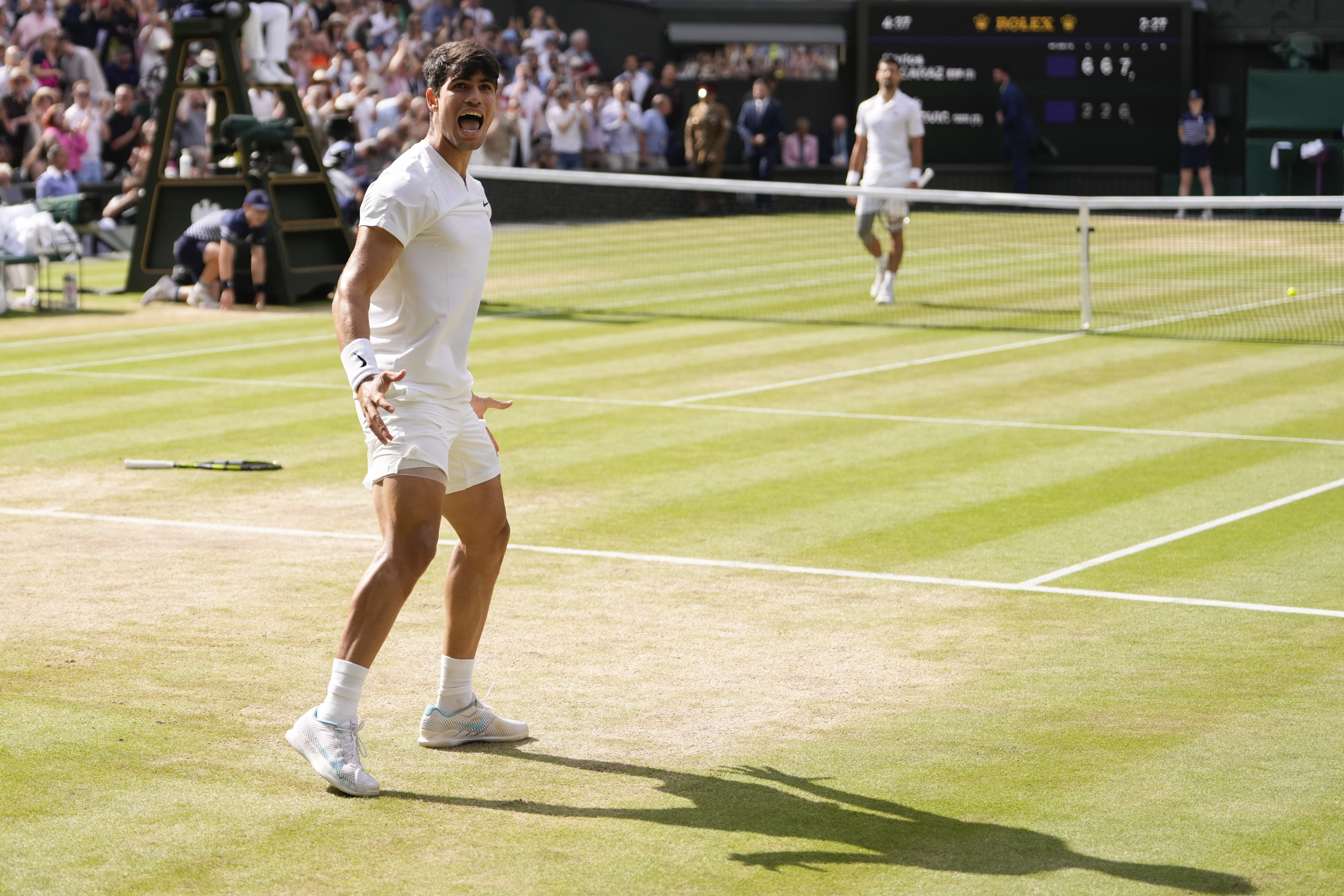The pinnacle of his career. A month ago, Carlos Alcaraz reached the highest peak and has been living there ever since; no one can bring him down, he doesn't want to come down. Succeeding in Roland Garros and Wimbledon consecutively is such a superlative success that it has its own name, the 'Channel Slam', with only five tennis players on the list: Rod Laver, Bjorn Borg - three times in a row -, Roger Federer, Novak Djokovic, and Rafa Nadal - twice. At 21, Alcaraz has already achieved it, confirming that he is on the path to becoming a legend, with no doubts remaining.
With his first Grand Slam, the 2022 US Open, skepticism was understandable: it could have been a one-day wonder, he was just a kid, hesitancy was logical. Last year, with his second Grand Slam, the first Wimbledon, there was some distrust in his physical condition because he missed the Australian Open before and the ATP Finals after. But now it is impossible to deny. At his age and with four 'majors' in his trophy cabinet, all that remains is to enjoy. It is too early to know if he will reach the age milestones of 24 for Novak Djokovic, 22 for Rafa Nadal, or 20 for Roger Federer, but it is clear that he will try. In fact, for now, he is ahead. At 21 years and two months, Djokovic had only won one Australian Open, Nadal had three Roland Garros titles, and Federer had not yet opened his account.
"What Carlos is achieving is scandalous. More than the physical level, it's the mental level, knowing how to handle the pressure that everyone puts on him. In the team, we are aware of the level he has, but maintaining it for so long is tremendously difficult. Even for us, who are with him every day, it surprises us," commented his coach, Juan Carlos Ferrero, about a phenomenon that keeps growing, especially in the Grand Slams.
Alcaraz, with the Wimbledon 2021 title.Kirsty WigglesworthAP
Motivated by history, Alcaraz has shown that it is very difficult to beat his game and physicality in five sets, which is why he usually does not fail in the 'majors'. Out of the last eight, he has won four and reached two semifinals and one quarterfinal. In the Masters 1000, in three sets, he may make mistakes and lose. Not here. "He is doing a great job. But we cannot take anything for granted. We can see the great example of Marc Márquez, who was winning everything, had an injury, and now has gone over 1,000 days without a win and is fighting to come back," Ferrero warns and, in a way, also praises. For his pupil to stop adding major titles, indeed, a serious injury would have to intervene.
Otherwise, years of celebrations lie ahead. His level of play is excellent, his adaptability to surface changes has been proven, and unlike the Big Three, he does not have many rivals at his level. In the last month, as his stature has risen, the profiles of Jannik Sinner, despite being the ATP ranking number one, and the rest of the contenders from his generation, such as Ben Shelton, Holger Rune, Felix Auger-Aliassime, and Sebastian Korda, have diminished.
In the circuit, a 37-year-old Novak Djokovic remains as an obstacle, gradually approaching his farewell, and that Next Gen that never managed to dominate, with Daniil Medvedev, Alexander Zverev, Stefanos Tsitsipas, or Casper Ruud. Alcaraz may lose to them, as happened in the quarterfinals of the last Australian Open, but he has figured out most of them, especially Tsitsipas or Ruud, against whom he has never lost.
The challenge now is to return to clay without getting injured to shine at the Paris Olympics, both individually and in doubles with Rafa Nadal, and then arrive at the last Grand Slam of the year, the US Open, unscathed. Despite his absence in the Monte Carlo and Rome Masters 1000, he has already played 39 matches in this half-season and still has the North American and Asian cement court tours ahead. For the first time, he could surpass 80 matches in a year, and that is now his only risk. Everything else around him is built on certainty: he is on the path to becoming a legend, with no doubts remaining.
